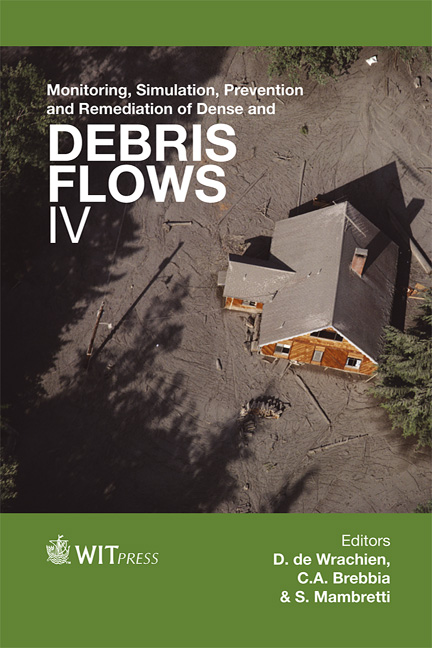Examination Regarding The Design Method Of A Protective Barrier For Debris Flow
Price
Free (open access)
Transaction
Volume
73
Pages
10
Page Range
195 - 204
Published
2012
Size
705 kb
Paper DOI
10.2495/DEB120171
Copyright
WIT Press
Author(s)
R. Sawada
Abstract
When designing a protective barrier in order to protect a railway from debris flow, the debris flow evaluates the effect which it has on a protective barrier, and examines a wall and basic structure. In this case, if debris flow can evaluate the influence which it has on a protective barrier as an external force like earth pressure, the design method of a retaining wall can be applied and a protective barrier can be designed. Then, ground displacement caused by liquefaction referred to the valuation method of external force exerted on a structure. In addition, the debris flow examines how to evaluate the influence which it has on a protective barrier as an external force. As a result, the debris flow was considered as viscous fluid and the external force which acts on a protective barrier has been presumed by asking for the viscous coefficient and drift velocity of the debris flow. Moreover, it was shown that applying the design method of a retaining wall and the design of a protective barrier is attained. Keywords: incomplete debris flow, viscous fluid, deterrence pile. 1 Introduction In Japan in recent years, generating of a landslide disaster represented by the debris flow resulting from a rainy season or local severe rain by a typhoon has occurred frequently. For this reason, in Japan, erosion control enterprise is promoted as a national policy. A railway in Japan has many routes also on a mountain slope, and an original countermeasure against an earth-and-sand disaster may be needed.
Keywords
incomplete debris flow, viscous fluid, deterrence pile.





